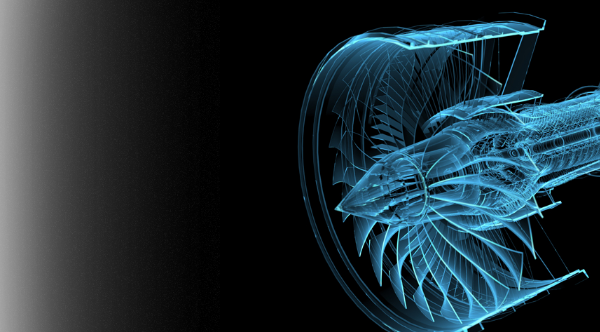Quantum X-ray Technology: The Future of Space Exploration
Introduction: A New Era in Space Exploration
Space exploration has always pushed the boundaries of human knowledge, technology, and innovation. From early telescopes to advanced satellites, each breakthrough has propelled us closer to understanding the universe. One of the latest game-changing technologies is quantum X-ray technology, a revolutionary advancement poised to redefine the way we explore deep space. This cutting-edge technology is expected to enhance spacecraft navigation, improve planetary surface imaging, and unlock mysteries of the cosmos that were once beyond our reach.
In this article, we delve into the transformative impact of quantum X-ray technology, its applications in space exploration, and how it could shape the future of interstellar missions.
Understanding Quantum X-ray Technology
Quantum X-ray technology combines the principles of quantum mechanics with advanced X-ray imaging techniques. Unlike traditional X-ray systems, which rely on conventional electromagnetic radiation, quantum X-rays harness quantum entanglement and high-energy photon interactions to produce ultra-precise imaging and data analysis. This results in enhanced resolution, better penetration through dense materials, and increased efficiency in scanning distant celestial objects.
How Does Quantum X-ray Imaging Work?
At its core, quantum X-ray imaging utilizes entangled photons, which have unique properties that allow them to interact with matter in ways classical X-ray photons cannot. These photons can pass through obstacles with minimal distortion, offering clearer and more accurate imaging. Additionally, quantum detectors enhance signal processing, reducing noise and improving data fidelity.
This innovation makes quantum X-ray technology an ideal tool for studying exoplanets, asteroid compositions, and deep-space phenomena with unprecedented clarity.
The Role of Quantum Physics in Developing High-Energy X-ray Devices
Quantum physics plays a crucial role in the advancement of high-energy X-ray devices, enabling innovations that push the boundaries of space exploration and astrophysics. These advancements rely on fundamental quantum principles such as superposition, entanglement, and wave-particle duality to improve the efficiency and precision of X-ray technologies.
Quantum Entanglement for Enhanced Imaging
One of the most significant contributions of quantum physics to X-ray technology is entanglement, where pairs of photons are intrinsically linked regardless of distance. This allows for more refined imaging techniques, reducing noise and increasing resolution. Quantum entanglement-based X-ray imaging can penetrate dense cosmic structures, providing clearer insights into black holes, neutron stars, and distant galaxies.
Superposition and Quantum Sensors
Superposition enables quantum sensors to measure multiple states simultaneously, improving the sensitivity of X-ray detectors. This leads to more accurate data collection when analyzing cosmic radiation, planetary compositions, and interstellar phenomena. Quantum-enhanced sensors are vital for detecting weak X-ray signals that conventional systems might miss, allowing for deeper exploration into dark matter and cosmic microwave backgrounds.
High-Energy Photon Generation and Control
The ability to generate and manipulate high-energy photons with precision is another breakthrough made possible by quantum physics. High-energy X-ray sources, such as synchrotron radiation and free-electron lasers, leverage quantum mechanical principles to produce extremely bright and focused X-ray beams. These beams are essential for probing planetary crusts, asteroid cores, and distant celestial objects with exceptional clarity.
The Role of Quantum X-ray Technology in Space Exploration
1. Enhancing Spacecraft Navigation and Communication
One of the critical challenges in deep-space exploration is precise navigation and communication. Traditional methods rely on radio signals, which experience delays and interference over vast distances. Quantum X-ray technology offers an alternative by using quantum entanglement-based communication, enabling faster and more reliable data transmission.
Additionally, X-ray pulsars—celestial objects emitting regular X-ray bursts—can be used as cosmic beacons for spacecraft navigation. Quantum X-ray sensors can lock onto these pulsars to provide real-time positioning, drastically improving autonomous spacecraft navigation beyond our solar system.
2. Revolutionary Planetary Surface Imaging
Current imaging technologies struggle to penetrate thick planetary atmospheres or subsurface layers. Quantum X-ray imaging allows scientists to peer beneath the surface of celestial bodies such as Mars, Europa, and Titan, detecting hidden underground water reservoirs, geological formations, and potential signs of extraterrestrial life.
By mapping planetary compositions with high accuracy, quantum X-ray technology will aid future robotic missions in selecting landing sites, drilling locations, and resource extraction zones for sustainable space colonization.
3. Analyzing Asteroids for Resource Mining
Asteroids hold vast amounts of precious metals and minerals that could support space industries and Earth’s growing demands. However, determining an asteroid’s composition before a mining mission is launched is a complex challenge.
Quantum X-ray spectroscopy can analyze the molecular and atomic structures of asteroids in real-time, identifying valuable resources such as water ice, platinum, and rare earth elements. This advancement will be crucial for the future of asteroid mining, allowing for efficient and economically viable extraction of extraterrestrial materials.
4. Deep Space Exploration and Dark Matter Research
The mysteries of dark matter and black holes have long perplexed scientists. Traditional observational tools are limited in their ability to detect and measure these cosmic phenomena. Quantum X-ray sensors, however, offer a new way to study these elusive aspects of the universe.
With their ability to detect weak X-ray signals emitted by high-energy cosmic events, these sensors will help researchers better understand the nature of dark matter, the structure of black holes, and the fundamental laws of physics governing our universe.
The Benefits of Quantum X-rays in Industrial Inspections
Quantum X-ray technology is not only transforming space exploration but is also revolutionizing industrial inspections across multiple sectors.
1. Superior Defect Detection
Quantum X-rays provide ultra-high-resolution imaging, enabling industries such as aerospace, automotive, and manufacturing to detect microscopic defects in materials and components. This ensures higher safety standards and reduces costly failures.
2. Non-Destructive Testing (NDT)
One of the major advantages of quantum X-ray imaging is its ability to inspect internal structures without damaging materials. This is critical in industries like construction, pipeline inspection, and electronics manufacturing, where quality assurance is essential.
3. Enhanced Imaging of Dense Materials
Unlike traditional X-rays, quantum X-ray technology can penetrate denser materials with greater clarity. This is particularly useful in metallurgy, where it can accurately assess welds, metal fatigue, and structural integrity.
4. Increased Efficiency and Cost Savings
By improving defect detection and reducing the need for physical dismantling, quantum X-ray inspections streamline manufacturing and maintenance processes, saving industries both time and money.
5. Medical and Pharmaceutical Applications
Quantum X-ray imaging is also making waves in healthcare, providing sharper medical scans, improving cancer detection, and enhancing drug quality control in pharmaceutical manufacturing.
Conclusion: A Quantum Leap for Space and Industry
Quantum X-ray technology is set to revolutionize not only space exploration but also industrial inspections and medical imaging. With its ability to provide unparalleled precision, non-destructive testing, and enhanced material analysis, this groundbreaking innovation will continue to push the boundaries of what is possible, ensuring a future where both science and industry benefit from its advancements.

Also Read :
